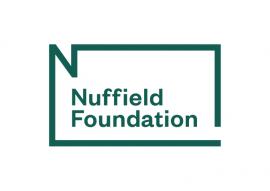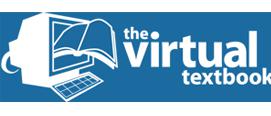Exact answers
This set of resources give pupils the opportunity to calculate exactly with
- fractions,
- surds and multiples of π;
- simplify surd expressions involving squares
- rationalising denominators
Visit the secondary mathematics webpage to access all list.
- ALL
- Teacher guidance
- Textbook
- Interactive resource
- Group work
- Activity sheet
Teacher guidance
Irrationals
From the Nuffield Foundation, this module attempts to build up an understanding of irrational numbers. It is aimed at students expected to achieve high grades at GCSE as it contains ideas and content which would normally be introduced much later (for example, the notion of closure, use of continued fractions – which are called ‘continuous’ fractions in the text).
This module consists of 19 workcards and associated teacher notes which helpfully include pre-requisite knowledge. The workcards are organised into four groups A, B, C and D and there is also a post test. Each card has detailed ‘Notes for the teacher’ and most cards have ‘Notes for the pupil’. The workcards include:
• A The set of natural numbers (N), the set of integers (Z) and the set of rational numbers (Q) are considered and how each set of numbers is built up from the preceding set
• B The link between fraction and decimals. Constructing an irrational number by producing a non-terminating, non-repeating decimal
• C Includes use of Pythagoras’ Theorem and Euclid’s proof of the irrationality of √2
• D Discussion of the irrationality of π
Textbook
Nuffield National Curriculum Mathematics 5
The Nuffield National Curriculum Mathematics stage five book is split into sections. Each section is divided into chapters giving relevant information and presenting activities to do and questions to answer. The 13 chapters on Number and algebra are at level eight and above, and are therefore suitable for those candidates following Higher GCSE courses.
Chapter 11 Rational and Irrational Numbers starts by reviewing what students may already know about the number system. It then goes on to consider well known irrational numbers such as π and √2, with a classic proof that √2 is irrational. It then progresses to rationalising the denominator and exploring the paradox that whilst surds are irrational you can theoretically construct surds. In each section detailed explanations and examples are followed by a range of questions that make strong links to other strands of mathematics.
Interactive resource
Surds
This file deals with simplifying, squaring, adding and subtracting numbers expressed in surd form. It also includes rationalising the denominator.
The file begins with a table showing the squares and square roots of integers between one and twelve. The next sheet gives examples of finding square factors when simplifying surds and this is followed by two sheets of examples using this technique. The fifth interactive sheet shows how to use factors to help simplify the product of two square roots. The next two sheets generate examples of squaring surds including those with brackets. The final three sheets deal with rationalising the denominator including when the denominator is in the form a+√b.
Group work
Manipulating Surds N11
In this resource from the DfE Standards Unit students identify equivalent surds and develop their ability to simplify expressions involving surds. The starting point for this activity is that students should understand what a square root is and be able to remove brackets correctly.
The materials use a true or false activity to introduce the session and establish prior learning and a “show that” activity to develop a structured approach to manipulating surds. There is a combination of small group and whole class discussion to extend students' understanding of surds. Next steps could be to use equivalent surds to simplify exact form solutions from quadratic equations and rationalising the denominator of surds.
The ideas in this session can be adapted for learning and practising a variety of skills, e.g. fractions, decimals, indices and factorising.
These materials exemplify the ideas and approaches adopted in the Standards Unit. To get the best from these materials further guidance can be found in Improving Learning in Mathematics Challenges and Strategies
Activity sheet
Arithmetic
These resources are part of a set of resources provided by the Mathcentre which cover aspects of arithmetic, often used in the field of engineering. What is a Surd is a short leaflet explains what is meant by surd form, and gives some circumstances in which surd forms arise; in this case Pythagoras and using the Quadratic formula.
This leaflet would be useful for students wishing to review, and consolidate, their knowledge and understanding of surds and the leaflet also includes a selection of questions to be completed, for which answers are provided. The leaflet could also be used to support “flip learning” where students are introduced to content independently and practice working through examples collaboratively.
Arithmetic
These resources are part of a set of resources provided by the Mathcentre which cover aspects of arithmetic, many of which are suitable for students studying mathematics at Higher Level GCSE. The Surds and Other Roots leaflet covers:
-
the relationship between negative powers and positive powers,
-
the relationship between fractional powers and whole-number powers;
-
replacing formulae involving roots with formulae involving fractional powers;
-
the difference between surds and whole-number roots;
-
simplifying expressions involving suds
-
rationalising fractions with surds in the denominator.
The leaflet combines clear notes and descriptions using key points, together with examples. Students wishing to review, and consolidate, their knowledge and understanding of arithmetic will find them useful, as each topic includes a selection of questions to be completed, for which answers are provided. This leaflet would be useful for students wishing to review, and consolidate, their knowledge and understanding of surds. The leaflet also includes a selection of questions to be completed, for which answers are provided. The leaflet could also be used to support “flip learning” where students are introduced to content independently and practice working through examples collaboratively.
Number/Algebra
This resource is one of the MEI GCSE Extension materials for Number/Algebra aimed at students who are working towards GCSE Mathematics and would benefit from exposure to mathematics beyond the GCSE specifications. The aims of the materials are to introduce students to new ideas to stimulate their interest in the subject as well as reinforcing some of the concepts in GCSE to improve their understanding. They are also designed to highlight how some areas of GCSE are developed at A level to encourage students to continue their studies.
Surds provides guidance for students on how to how to multiply algebraic terms involving surds and ‘rationalising the denominator’ of fractions containing surds. They are then encouraged to apply their understanding to an investigation into the golden ratio. This resource would be useful for students wishing to review, and consolidate, their knowledge and then test their understanding of surds in a more complex less familiar context.
Properties of Number
SMILE (Secondary Mathematics Individualised Learning Experiment) was initially developed as a series of practical activities for secondary school students by practising teachers in the 1970s. It became a complete individualised scheme based around a network of activity cards and assessments. This SMILE resource contains three packs of games, investigations, worksheets and practical activities supporting the teaching and learning of the properties of number.
Properties of number pack three contains fourteen work cards. There are combinations of explanations and worked examples followed by probing questions and activities to challenge understanding. Work cards 12 and 13 look are about rational and irrational numbers, and number 14 challenges what they have learnt using proof by contradiction.







